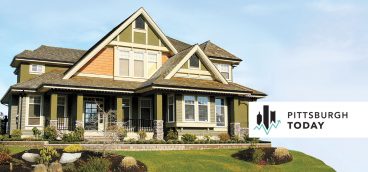
The holiday revelers, about 150 strong, gathered at East End Brewing Company to enjoy a different sort of Christmas celebration, neither family gathering nor office party. Rather, this soiree was hosted by Walnut Capital for the tenants of its trendy Bakery Living apartment complex at Bakery Square in Shadyside.
To underscore how responsive it is to the millennials who largely form the Bakery Living community, Walnut Capital presented each with the perfect New Age favor—a pair of gift cards for Uber.
For those who remember the days when landlord-tenant relationships centered on security deposit disputes and leaky furnaces, the focus by Walnut Capital and other developers on kicky new services may seem startling. Yet it’s that very emphasis that has driven extraordinary growth in the apartment sector.
That growth is particularly important because it comes amid prolonged sluggishness in the single-family housing market, which only now is beginning to shake to life. Thus, it’s the hot apartment sector that continues to be a key provider of residential support for the region’s economic momentum.
Uncertainty in the Single-family Market
When the mortgage scandals struck in the mid-2000s, shock waves rolled through the nation; southwestern Pennsylvania hardly was immune. With respected industry veterans going to jail and old-line financial institutions socked with hundreds of millions in fines, there was very little available financing—or stomach—for new single-family housing starts. In 2008–10, the six-county area of southwestern Pennsylvania saw a total of 8,933 housing starts, according to Tall Timber Group, which tracks permits and starts. Compare that to the total for the first three years of this century, when the region saw 14,084 single-family housing starts. That’s a decline of more than 36 percent. The 2,778 total for 2010 was the lowest for any year this century.
Uncertainty in the single-family market had still another impact. It persuaded baby boomers and empty nesters, who might have been expected to swap out too-spacious homes for more appropriate quarters, to hang on to their properties a little longer.
“Baby boomers want something right for today’s living,” says Helen Hanna Casey, president and CEO of Pittsburgh-based Howard Hanna Real Estate Services, the third-largest real estate company in America. “They want to ‘right size,’ not downsize. Market wide, the (residential) communities we offer are very popular, but we don’t have a lot of them, and we don’t have a lot of new condominiums. I think boomers are having to look longer for what they want, so they’re staying in their homes longer.
“The market is a little more static than it could be and should be because of lack of inventory. It’s still a great market—especially if your house meets the needs of today’s buyers.”
For the single-family market, it’s a double whammy: not much in the way of new construction, fewer than expected existing homes on the market. Thus, inventory is tight. That’s had a salutary effect on the value of existing homes. According to Zillow, an online real estate database company, the average home in Allegheny County will be worth $140,000 in November 2017, up from about $100,000 a decade earlier. But as far as activity in the market, forget it.
“The single-family market is depressingly dull,” says Jeff Burd, Tall Timber Group president. “It’s been flat for an extended period of time… it’s a crazy thing. Homes here aren’t built for seniors. It’s not a friendly environment for people in danger of falling. Yet Pittsburgh has one of the highest retention rates. You’re seeing lingering fear from the financial bust that people couldn’t sell their homes if they put them on the market.”
Slowly, however, the market is rising to meet the needs of boomers. Among the developments filling the void is Edgewater at Oakmont, a community along the Allegheny River that mixes detached single-family homes (in the $350,000–$800,000 range), townhouses and condominiums. When Murrysville-based Kacin Properties acquired the former site of Edgewater Steel operations in 2006, it decided to minimize its risk by constructing only contracted units. Kacin, which developed the Summerset at Frick Park complex in Squirrel Hill, needn’t have 170 completed, occupied homes with only a little room left on the 34-acre property for expansion.
“We’re two to three years ahead of where we projected we’d be,” notes Jason C. Corna, Kacin’s director of marketing and sales and managing broker for Edgewater Realty.
Edgewater has attracted a mix of buyers, but most are local and from a dominant demographic.
“We do have a high rate of empty-nesters,” Corna confirms. “Some have left the suburbs for something that’s more city-like. We figured if we could replicate something like Summerset within a walkable town, it would be even more successful.”
Also in the works is a community called Pinnacle at Adams, which Traditions of America is developing in Butler County. The Radnorbased company already has built several successful local adult communities, including Sewickley Ridge and Summer Seat, in Allegheny County, but Pinnacle at Adams will offer homes beginning at $350,000 that are a little larger and offer such natural amenities as outdoor fitness stations and an on-site pond for kayaking and canoeing. Says Janette Hawkins, Traditions of America marketing director:
“We think people have been waiting for an opportunity like this, where they have a little more space but still have low maintenance. Pinnacle will appeal to people who like to be outdoors and have those amenities right within their community.
“Pittsburgh has been a very good market for Traditions. We’re definitely planning on a couple more projects out there.”
A Perfect Storm for Apartments
The same factors that have depressed the single-family market have fueled an amazing, if not unprecedented, boom in the development of apartment units. The multi-unit market bottomed out in 2010 when, according to Tall Timber Group, only 92 units were started in the region, barely enough for one healthy block party. But output rose in each of the next five years. From 2013 to 2015, developers launched 7,451 apartment units—figures that hadn’t been seen in this century.
“Some developers found apartments were the only things they could get financed,” Burd says. “Insurance companies fell in love with them. Fannie Mae and Freddie Mac were happy to finance them. Millions of people around the country lost their homes. So the rental market got a boost. And you had a generation coming out of college, finding pretty good jobs, and they weren’t looking to buy homes. Plus the natural gas business was renter-friendly. So you had a perfect storm from a building standpoint.”
Another force in the apartment boom has been the success of the region in landing cutting-edge companies that are attracting millennials… and paying them well.
“The drivers for it are folks relocating here,” Burd agrees. “They’re doctors, engineers, they work for Google, Uber, Apple. They come from urban places and they’re looking for urban settings. Those units are not having problems filling up.”
Our new residents aren’t looking for permanent digs just yet.
“They don’t need the big space,” Casey says. “One space downstairs that is open is great for them because they love gathering spaces. They love walking spaces. They want Wednesday Wine Night in the lobby, package pick-up service. They want to have a community.”
Shadyside-based Walnut Capital is among the developers that have stepped up big time to meet the emerging needs of this new generation of apartment hunters. Of the roughly 2,500 units Walnut Capital has developed, more than 1,000 have been delivered to market in the last four years, including the signature Bakery Living on the site of the former Reizenstein Middle School.
Todd Reidbord, president of Walnut Capital, acknowledges that occupancy rates in the region’s apartment market have softened a bit.
“I can’t remember a building boom like this, but you have to remember that we went 50 years without building anything of significance. We’ve always been a little conservative here. We’ve seen 100 percent occupancy here for the last 50 years. For the first time, we’re seeing 10–15 percent vacancy. It’s the new normal.”
Burd notes that if the apartment market was overheated, there’s a cool-down ahead. He’s projected the number of 2016 apartment starts at 1,985. If that’s correct, it will be the first year since 2013 with fewer than 2,000 starts. “If I had to sum it up in one word, I’d say we are slightly overbuilt, but I think we’re as overbuilt as we’ll get. There still are 3,000 or 3,500 units in the pipeline, but indications are some of those are on the shelf.”
And if the region continues its success in attracting young professionals, the apartment market will stay healthy—no ifs, ands or gluts.
“There’s a little bit of overbuilding now, but we’ll eventually catch up with it,” Reidbord predicts. “The real challenge is to offer opportunities for business to locate here. If they come, apartments will follow.”




